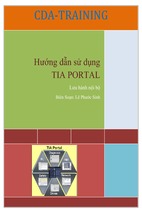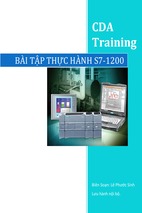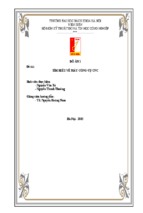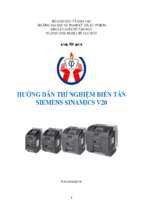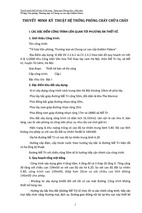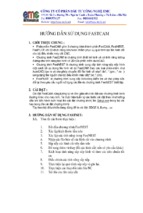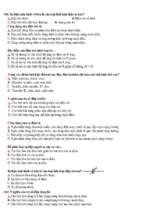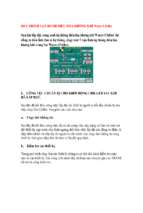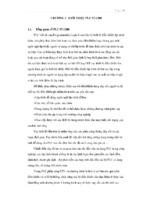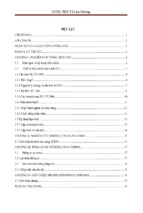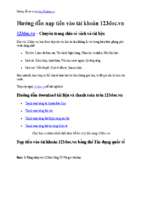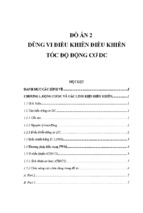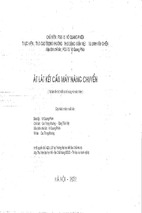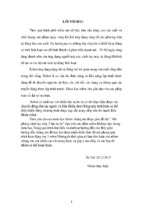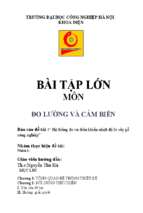Mô tả:
ADVANCED MANUFACTURING
ENGINEERING
3: Review of Mechanics and Physical Properties of
Materials
December 2016
2
Introduction
• Often materials are subject to forces (loads) when they are used.
Mechanical engineers calculate those forces and material scientists
see how materials deform (elongate, compress, twist) or break as a
function of applied load, time, temperature, and other conditions.
• Materials scientists learn about these mechanical properties by
testing materials. Results from the tests depend on the size and
shape of material to be tested (specimen), how it is held, and the way
of performing the test. That is why we use common procedures, or
standards, which are published by the ASTM.
3
Introduction
4
Introduction
• Relative Mechanical Properties of Various Materials at Room
Temperature (in Decreasing Order). Metals Are in Their Alloy Form
5
Mechanical Loading
6
Tensile testing
7
Stress–strain curve
8
Stress strain
9
Shear stress and strain
10
True stress- true strain
11
True stress- true strain
12
Mechanical properties & temperature
• Effect of temperature on mechanical properties of a
carbon steel
13
Bending test
• Two bend-test methods for brittle materials: (a) three-point bending
and (b) four-point bending.
14
Material Hardness
• Hardness is a measure of how resistant solid matter is to various
kinds of permanent shape change when a compressive force is
applied. Some materials (e.g. metals) are harder than others (e.g.
plastics). Macroscopic hardness is generally characterized by strong
intermolecular bonds, but the behaviour of solid materials under force
is complex; therefore, there are different measurements of hardness:
scratch hardness, indentation hardness, and rebound hardness.
• Hardness is dependent on ductility, elastic stiffness, plasticity, strain,
strength, toughness, and viscosity.
• Common examples of hard matter are ceramics, concrete, certain
metals, and superhard materials, which can be contrasted with soft
matter.
15
Material Hardness
A selection of hardness testers.
(a) A Micro Vickers hardness tester,
(b) Rockwell hardness tester (the support
for the part has been removed for
clarity),
(c) Durometer, and
(d) Leeb tester.
16
Material Hardness
• Indentation
geometry in
Brinell hardness testing:
• (a) annealed metal,
• (b) work-hardened metal,
and
• (c) deformation of mild
steel under a spherical
indenter. Note that the
17
Material Hardness
• General characteristics of hardness-testing methods and
formulas for calculating hardness.
18
Ratio of maximum yield stress to density
19
Specific strength
• Specific strength (tensile strength/density) and specific stiffness
(elastic modulus/density)
Fatigue
• Fatigue
is the progressive and localized structural
damage that occurs when a material is subjected to
repeated loading and unloading “repeated stress cycles ”.
- Xem thêm -

